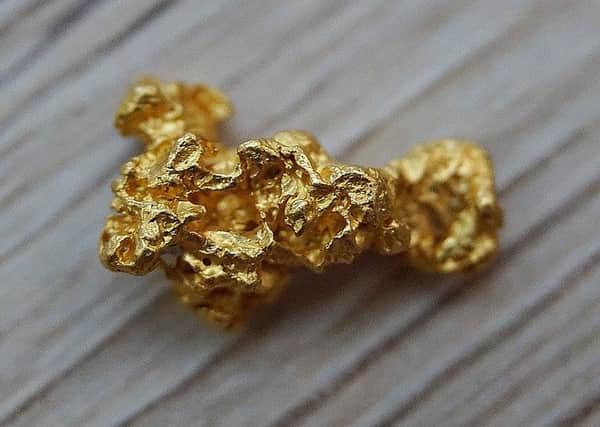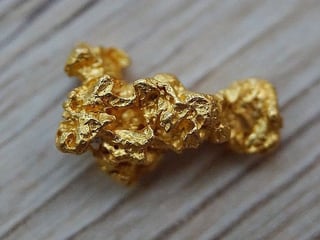Neil Clark: This is how much you could make from Scotland's gold rush


Before going out to make your fortune, you have to understand that this is the largest nugget found in over 500 years and that it may be a further 500 years before another of equivalent size is found.
In fact, the chances of finding any gold at all is quite slim.
Advertisement
Hide AdAdvertisement
Hide AdAs with everything to do with the land in Scotland, ownership of the gold rights is very complicated. There are, however, a few places where licenses to pan for gold can be obtained legally and you can find a flake or two worth pennies.
These include Wanlockhead in the Scottish Borders where gold mining once took place in the 1500s, and Kildonan in Sutherland where there was Britain’s only gold rush in 1869.
Most gold panners in Britain do not undertake their sport for profit – they do it for the excitement of discovery, the camaraderie and the great outdoors.
The truth is that if many would-be prospectors went to the hills looking for gold on the basis that a nugget was found somewhere in Scotland, then there will be a lot of disappointed and out-of-pocket prospectors.
Next year we celebrate the 150th anniversary of the British Gold Rush near Helmsdale, where my great-great-grandfather, Donald Campbell of Lybster, was photographed sitting on a grassy slope in the “City of Gold” – Baile ‘n Oir.
Gold rushes in Scotland have not always been successful though. One gold rush was cringingly embarrassing.
In 1852, thousands of poorly paid workers down-tooled and went to the hills above Kinneswood in search of riches on the basis of the rumour of gold nuggets the size of your fist. What they ended up with were sacks full of the virtually worthless mineral pyrite.
This gold rush did not last long but became known as the Fools’ Gold Rush. The mineral pyrite also became known as fool’s gold.
Advertisement
Hide AdAdvertisement
Hide AdIt is important to understand that the chances of you finding a large nugget are slimmer than winning the lottery.
You can pay a lot of money for the equipment and never likely to recover even a fraction of the costs.
Neil Clark is curator at The Hunterian, University of Glasgow, and author of the book Scottish Gold: fruit of the nation.
